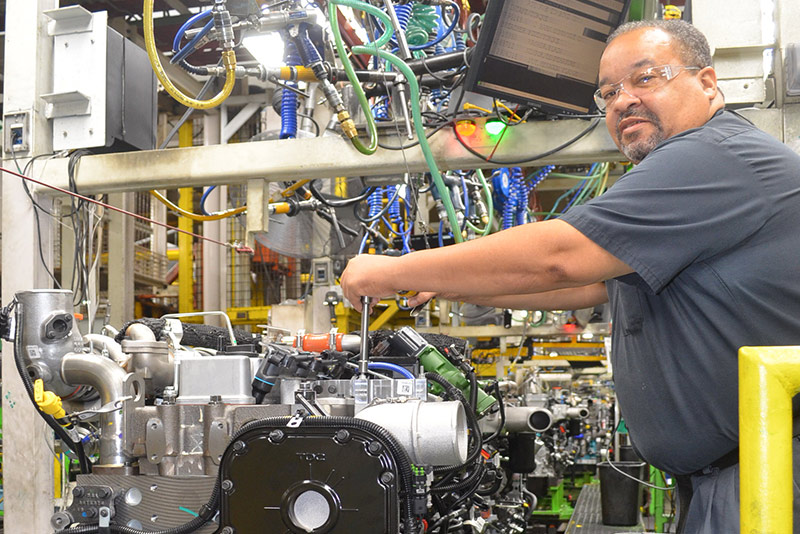

A new ultra-low emissions compressed natural gas truck engine represents a major step forward in pollution control when combined with renewable natural gas, according to a report released Tuesday at the Advanced Clean Transportation Expo in Long Beach, Calif.
Federal clean air regulations require significant reductions in truck emissions over the next decade, and until now the pathways have been considered too expensive and technologically challenging to make much sense, according to the authors of “Game Changer,” a white paper prepared by the clean transportation consulting firm Gladstein, Neandross and Associates and scheduled for presentation at the conference.
In many of the most polluted areas of the country, the federal air quality goals can’t be met without wholesale transformation of the trucking fleet – particularly the heaviest of heavy duty trucks – to zero or near-zero emission technologies, according to the paper.
To date, proposed solutions rely heavily on electrification of the fleet, either through battery-electric or hydrogen fuel-cell electric propulsion systems.
But a new ultra-clean compressed natural gas (CNG) engine developed by the Cummins Westport Inc. joint venture can lower the three key types of tailpipe pollutants – nitrates of oxygen or NOx, smog-causing particulates and greenhouse gases – well below the maximum levels now set by federal and state regulation.
Several other engine manufacturers are working on similar ultra-low emission natural gas engines though none has been certified or gone into production.
The first of Westport Cummins’ near-zero NOx engines, an 8.9 liter version, has been certified by theCalifornia Air Resources Board (CARB) to produce 90 percent less NOx than permitted in diesel engines under the present standard of 0.2 grams per horsepower-hour.
Trucks equipped with the engine – the 8.9-liter version and two more that are in development, a 6.7-liter for medium-duty work trucks in 2017 and a 12-liter for heavy-heavy duty trucks due in 2018 – are far less expensive than either type of electric truck, said Erik Neandross, the consulting firm’s chief executive and co-author of the paper.
Such technology also provides cost advantages, the consulting firm reported.
There are more than 130,000 natural gas trucks in use today, half of them heavy-duty models, so fueling and service infrastructure costs would be far less than developing a national system of electric truck charging stations and training mechanics on electric propulsion and fuel systems, Neandross said.
“We have technology and fuel available today to provide significant air quality improvements that will allow us to get to our air quality goals in the very near term,” said Neandross. “This is a seamless integration of clean technology and fuel into that maturing heavy-duty natural gas vehicle market.”
Combine the “near-zero” engine with low-carbon renewable natural gas fuel, typically produced from landfill and food waste, and tailpipe emissions can fall by as much as 14 times from what could be achieved using electrified trucks powered by electricity generated from today’s power plants, according to the paper.
Pushing widespread adoption of any of the clean truck solutions will entail significant up-front expenses. The paper urges national and state incentive programs to help trucking operators pay-down the initial cost of vehicles with the near-zero engines and natural gas fuel systems.
The consulting firm estimated that $500 million in incentives nationally would help deploy four times more near-zero CNG trucks than battery-electric models, and nine times more of the ultra-clean CNG trucks than hydrogen fuel-cell electric trucks.
CARB has estimated that it is technologically and economically feasible to deploy nearly 400,000 heavy-duty natural gas trucks by 2030. That’s a goal that is far too costly to achieve with other clean-truck engine and fuel technologies, argues the paper, which contains a dozen recommendations for promoting deployment of heavy-duty near-zero emissions natural gas trucks.